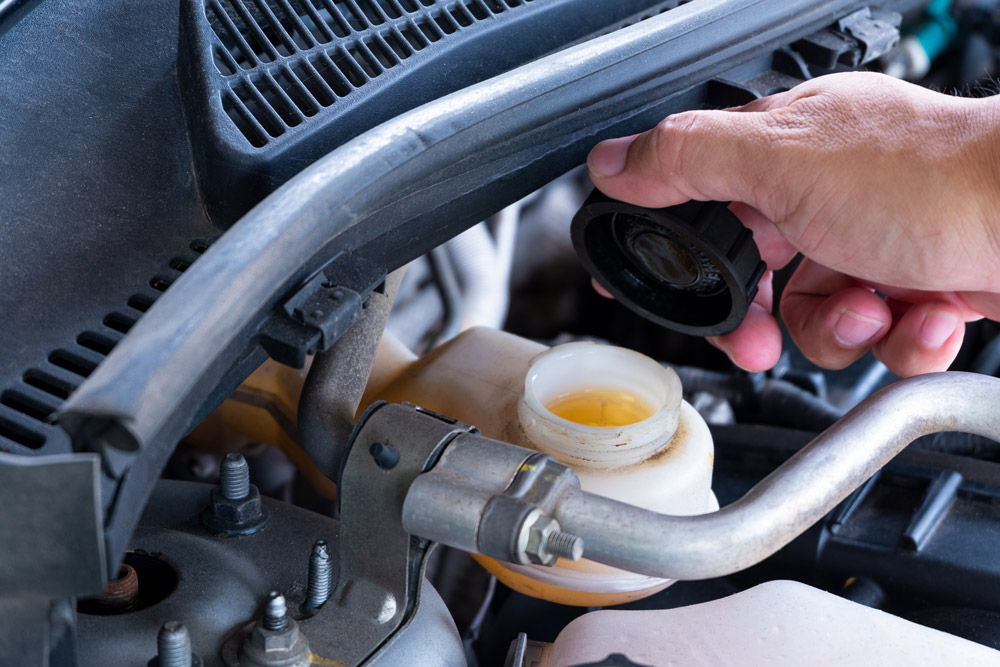Like the Human Body
Our own human bodies are a wonder of biological engineering. Looking at a graphic display of the circulatory system, it’s amazing how many veins and arteries have branched off into every part of the body, from the tips of our elbows and the ends of our toes, to the back of our eyes and up through our brains. Pair that system with the always-working organ that is our heart, pumping away every second, and we are a walking, talking construct of fluids — all working together to keep us alive and happy.
Our vehicles are not much different. Thanks to modern engineering, we have invented a number of different types of fluids that all work together to keep the engine running smoothly, the steering and the brakes working easily, and even keeping the car clean.
As car repair experts, our team at Schulz knows how all these fluids contribute to the safe and effective operation of your car. Let’s take a look at each of them together.
A Note About Hydraulics
Because hydraulics can play such an important role in many of these fluids, it’s beneficial to know exactly how it works. Luckily, the system is fairly simple. Basically, a liquid is subjected to extreme pressure on one end of a line, pushing the liquid quickly to the other end. Once it reaches that other end, it will hit a stopper (in our case, usually a brake pad or a piston), pushing it into action.
The hydraulic system uses a basic series of tools to work, including:
Reservoir: This is the chamber where the liquid is held. Whenever you top off or replace your car’s fluids, you are pouring them directly into the reservoir.
The Pump: The pump is the part that actually supplies the pressure into the reservoir, which then pushes the fluid through the lines. There are many different types of pumps, located in different parts of the car, which Master Muffler can maintain easily.
Valves: Valves, like those found in our heart, are little doorways that direct where the fluid is supposed to go. These can be controlled in any number of ways, from mechanical, to electrical, to pneumatic, and more.
Actuators: In the final step of this system, the actuator converts the hydraulic pressure into actual mechanical operation.
The Big Seven
Every conventional car, truck, or semi found on the road today runs on a system of seven separate fluids, all accomplishing their own tasks for the good of the whole. These fluids have reservoirs located throughout the chassis of the vehicle and use hydraulic pressure and manual manipulation on the part of the driver to work properly.
Motor Oil: This fluid, also known as engine oil, keeps the engine lubricated so that the constantly-moving parts don’t grind together and wear down.
Windshield Wiper Fluid: Used to clean both the front and rear windshields. This fluid also often contains a mixture of anti-freezing agents as well.
Transmission Fluid: Much like the motor oil, this fluid keeps the gears in the gearbox lubricated so that every gear shift is smooth and easy.
Brake Fluid: One of the hydraulic fluids alluded to above. This fluid pushes against brake pads, helping to slow down each wheel to a stop.
Power Steering Fluid: This fluid flows through a series of rotary valves to help move the steering wheel more easily.
Antifreeze: Using a 50/50 mixture of water and antifreeze solution, this fluid keeps the engine both from getting too hot and getting too cold to operate.
Differential Fluid: This type of oil lubricates the clutch as well as the gears around the wheel axles, ensuring that the differential works properly.
If you have any questions about the performance of your car’s fluids, feel free to drop by our garage today and we’ll get you back up and running in no time.

